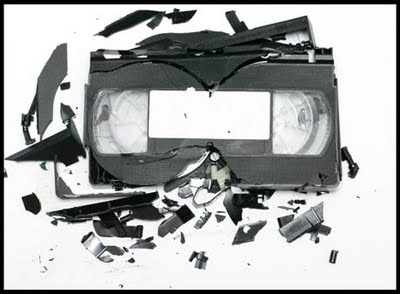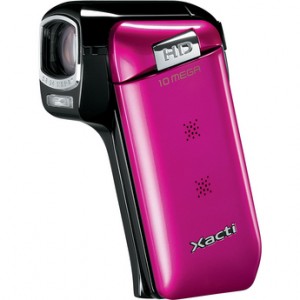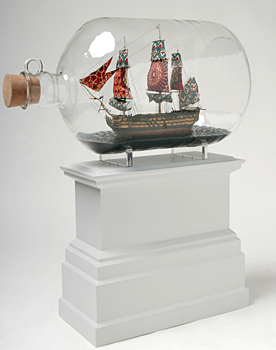
Art21’s Season 6, at least as far as video production is concerned, is getting a little more real everyday. We’re deep in the throes of pre-producing our first honest-to-god shoot for Season 6. I can’t reveal many details but I can say that it’ll be in London, cover multiple artists (some London/UK-based, some not), is going to require some serious on location live translation, and – I’m deeply embarrassed to admit – will be our first truly all digital/tapeless shoot. I’m furiously researching now how to make both the tapeless location and post-production processes work within our existing tape-based model. Any tapeless geniuses out there can feel free to contact me here; I’ve got all sorts of questions. It’s a brave, not-so-new world out there (but more on that later.)
One concrete thing I can reveal about our London shoot is that we’ll be covering the unveiling of Season 5 artist Yinka Shonibare MBE’s Trafalgar Square Fourth Plinth project, Nelson’s Ship in a Bottle. Unfortunately we were a little too early in the game to shoot the work’s fabrication back when we originally shot with Yinka in the Fall of 2008. But we’ll definitely make up for that now; expect the footage to appear in an upcoming Exclusive video, or at the very least an Uncut video.
Speaking of Uncut video, our industrious production unit shot two more Art21-sponsored artists conversations since my last blog post. I’ll save you the last installment’s angst (the eternal problem of shooting a necessarily static, talk-based event) and just give you a nice video nugget instead. And in early May, we shot a unique meeting of two super smart minds: Art21 Season 3 artist Josiah McElheny and art critic and historian Boris Groys. Modernism-obsessed Josiah and 20th-century Russian avant-garde expert Boris vibed almost too well (both were actually taking notes throughout their talk), discussing the more than ideological differences between translucency and transparency and, in the clip above, the very real dangers of the modernist glass box.

In our continual search for new and varied video content (not to mention quicker production turnarounds) and in the above-mentioned move to tapeless recording, we recently bought a pink pocket video style camera — quickly dubbed ‘Chanel’ — for some truly Uncut video stylings.
And our first test was our most recent Culture Wars art trivia contest outing at the 92nd Street Y Tribeca on April 28. I’m presenting the below not so much for the content (though I think Art21’s Marc Mayer and Jonathan Munar do make charming, dynamic quizzo MC’s and the vid does give an excellent flavor for the informal yet bow-tied spirit of these events), but more for what it says about the latest in low cost, high yield digital video technology. Shot with a $129 camera in extremely low level light conditions; encoded as HD digital movie files on SD cards; transferred directly from the camera and to my desktop computer; quickly cut with free/OS-included editing software; and finally exported again to a Quicktime file and uploaded to a free video hosting site. And it looks and sounds damn good considering. This camera is the latest model in consumer video ease of use. One that as a longtime video production professional — used to the traditional slow burn of hired freelance crews shooting with large shoulder mounted tape-based cameras, followed by months-long video and audio editing sessions — is incredibly appealing.
As usual, I’ll leave you with a couple of screening recommendations (one virtual, the other not) to check out.
TateShots. For the past couple of years now, UK’s Tate has been producing some of the more varied, intriguing, resourced (and envy-provoking) online videos on art and artists around. You can find them at their Tate Channel. What’s impressive to me is the effort to break out of the normal museum programming constraints — curators are relatively scarce, exteriors are plentiful — and the commitment to varying up the format and technique (“3 Minute Wonder,” “In the Studio,” “Bring the Noise”) while still maintaining a consistent editorial tone. And it’s the tone — subject-attentive, quietly playful, open-minded — that I respond to most and certainly strive for in Art21’s various online videos. So below is a particularly well-observed and nicely stylistically varied recent TateShot on the crazy lengths that the Tate’s Conservation Department is willing to go preserve Chris Ofili’s works. I particularly liked the subtle way that the featured conservator is both documentary narrator and dramatic character.
[youtube:https://www.youtube.com/watch?v=a0b90YppquE]
Exit Through The Gift Shop. Impressing folks at the last Sundance Film Festival and recently opening to some really positive reviews, Exit has probably made one of the bigger critical splashes for an art-related theatrically released documentary in recent memory (something to write about in and out itself). It’s received a lot of attention for its ingenious premise – nominally the film is well-known British street artist Banksy’s documentary portrait of erstwhile street art documentarian turned street artist Thierry Guetta, AKA Mr. Brainwash, and his self-financed plunge into the contemporary art market. Extremely meta, I know, but it’s one of the film’s many virtues that it makes the postmodern hall of mirrors narrative story playfully intelligible. Though the last act of the film devolves into disappointing art morality tale — wannabe street artist (Guetta) cashing in = bad; true street artists (Banksy, Shepard Fairey) keeping it real = good — the film really isn’t about art at all. At heart, it’s a potent and fresh exploration of the documentary-recording instinct itself and the dynamic between artist and subject…something close to our thinking here at Art21.
One other aspect I wanted to mention is the film’s gorgeously lo-fi texture – Banksy and his production team made the very effective aesthetic choice of shooting their original material on purposely down-market video, finding a close visual equivalent to Guetta’s original consumer end digital video material. All married together, blown up to film, and then projected, the footage itself has a kind of frayed, surveillance quality perfectly suited to its street art subject. The movie is currently playing nationally in the US, at least in some of the bigger, art-friendlier cities; you can find local screenings here.
Enough for now. I’m off to the Mendocino Film Festival in early June. I’ll let you know how it goes.




